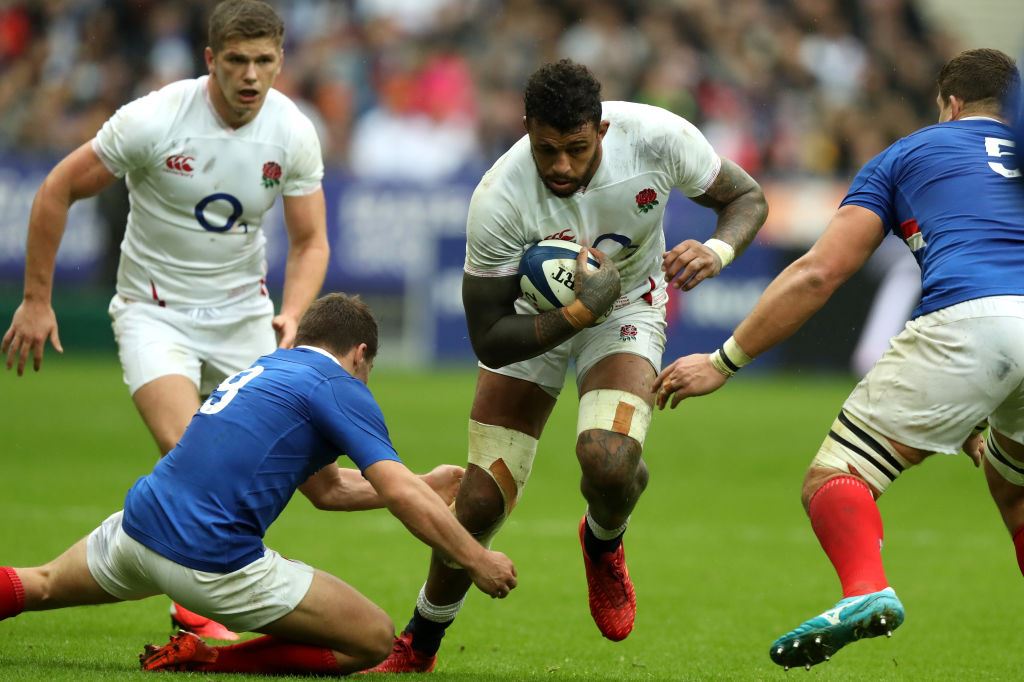Lions tour contenders RANKED – Courtney Lawes can win showdown with du Toit

1203589378
THE traditional role of a Lions blindside, or No.6, was that of a big, athletic flanker, who combined being a damaging ball-carrier and tackler, and usually also provided a pack with another line-out option.
You could argue that over the last 20 years that the traditional blindside role has undergone a number of variations, not least a period when we had flankers who, in terms of skills and effectiveness, were jacks-of-all-trades but masters of none.
However, in essence, the qualities required at blindside remain the same as they ever were – especially on a Lions tour of South Africa. Paramount among them is having a blindside with the physical presence to go toe-to-toe with a Springbok back row in which there is always a premium on size and power.
South African back row trios have an unchanging profile of being big, mobile, and aggressive – and there are clear signals that it will be no different on the 2021 Lions tour.
The Springbok back row picked against England in the 2019 World Cup final was typical in that it featured two imposing flankers. The bigger of them, Pieter-Steph du Toit, who was crowned World Rugby Player of the Year, is an athletic 6ft 7ins giant who weighs-in at just under 19 stone (120kg), while the smaller is Siya Kolisi, the World Cup-winning Springbok captain, who is 6ft 2ins and 15st 8lbs (99kg).
Du Toit emerged from the World Cup as a key component in South Africa’s success not just because of his mobility and tackling prowess, but also for his close quarter power and non-stop work ethic in what we consider to be the blindside role.
However, the South Africans have always favoured packing a heavyweight flanker behind the tight-head prop in order to reinforce the right side of the scrum, and, like Du Toit, they invariably where the No.7 shirt. This means that Springbok openside ‘fetchers’ usually wear the No.6 jersey as Kolisi does – and as François Pienaar, the 1995 world champion captain, did before him.
While Springbok numbering is different to that favoured by the Home Unions, it changes nothing in terms of the 2021 Lions facing an adversary which believes that “might is right” in a forward contest in which the back row battle is crucial to success.
This is why getting the back row balance right in Test selection is critical to Warren Gatland’s chances of adding to his impressive CV as Lions coach – and, despite the as yet incomplete 2020 Six Nations campaign, he has a wide range of blindside options.
His tried-and-tested Lions candidates are Courtney Lawes, Ross Moriarty, Peter O’Mahony and CJ Stander.
Nick Cain’s ranking of who should start at blindside flanker for the British & Irish Lions in 2021
- Courtney Lawes (England)
- Jamie Ritchie (Scotland)
- Sam Skinner (Scotland)
- Peter O’Mahony (Ireland)
- Ross Moriarty (Wales)
Moriarty, who was injured early on in the 2017 drawn series in New Zealand, can cover No.8, as can O’Mahony, who was the starting captain in the first Test, and Stander, who played the second half of the third Test. Lawes, who also plays lock, came off the bench for lengthy second-half stints in the second and third Tests.
Among the new contenders are two Scots, the Exeter blindside/lock Sam Skinner (6ft 5ins, 17st 6lbs/111kg), and the all-action Jamie Ritchie (6ft 4ins, 15st 8lbs/99kg), and two Irishmen from Leinster. These are Caelan Doris (6ft 4ins, 16st 10lbs/106kg) and Max Deegan (6ft 3ins, 17st/108kg) both of whom are comfortable at No.8.
They will be joined by England’s Mark Wilson (6ft 2ins, 16st 12lbs/107kg) who has shown the adaptability to play in all three back row positions at international level, and Josh Navidi (6ft 1ins, 15st/95.25kg) a Welshman with identical credentials.
The competition at blindside could be made even fiercer if Gatland opts for speed rather than size as his key selection criteria, because it could bring versatile players such as England young guns Tom Curry, Sam Underhill and Ben Earl – all of whom are 6ft 1ins and natural opensides – into the equation.
Against sides other than South Africa that might be an option, but with Kolisi as the shortest player in a Springbok back five which is likely to range from 6ft 2ins to 6ft 9ins, the Lions line-out could be under intense pressure without a tall blindside to combat Du Toit.
This makes the 6ft 7in Lawes, and other second rows with significant blindside experience, like Skinner, a valuable commodity – and might even bring the likes of England’s Charlie Ewels into the picture.
It means also that the stock of proven line-out specialists like O’Mahony will rise – as will that of Doris and Ritchie if they can match him over the next year.
If South Africa had size without mobility, then the Lions could make a case for playing at a speed they could not live with – which might include a relatively small, dynamic blindside.
However, the world champions are unlikely to offer Gatland that luxury, and having a blindside at No.6 who can compete with Du Toit seems to be non-negotiable.